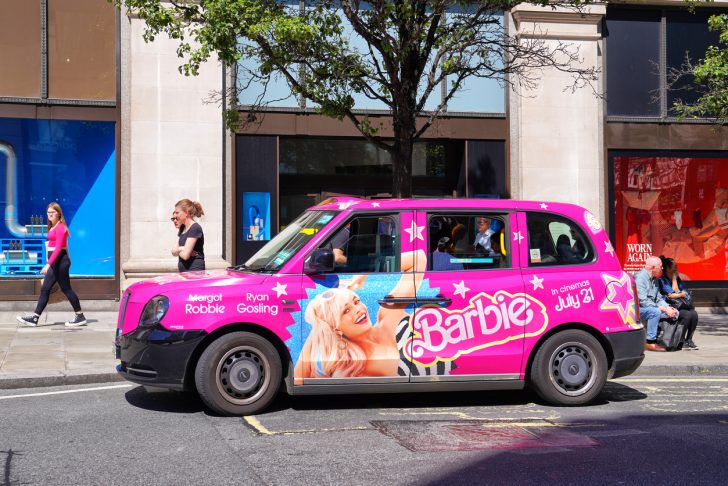When it comes to the pantheon of toys that have left an indelible impact on pop culture, few can rival the reign of Barbie. With her eternally youthful appearance, a wardrobe that could fill walk-in closets worldwide, and a CV boasting careers from astronaut to zoologist, Barbie is more than a doll. She's an icon. For over six decades, she has been breaking molds—quite literally—and shaping societal norms, influencing generations of children and adults alike.
The Birth of Barbie: From Concept to Creation

The first Barbie doll was introduced in 1959. (image source: YouTube)
To understand the captivating journey of Barbie, we must rewind to 1959—the year the first Barbie doll was introduced. But before that, let's meet her creator: Ruth Handler. Ruth watched her daughter, Barbara, play with paper dolls and imagined how beneficial a 3D adult-like doll could be for little girls, allowing them to act out roles and scenarios beyond motherhood and domesticity, which were primarily presented by the baby dolls available at that time.
Inspired, Ruth approached her husband, Elliott, co-founder of the Mattel toy company. Despite initial resistance from industry gatekeepers, Ruth persisted, and eventually, Barbie (named after her daughter) made her debut at the American International Toy Fair in New York on March 9, 1959—now officially considered Barbie's birthday.
More Than Plastic and Paint: A Socio-Cultural Phenomenon
From her inception, Barbie was destined for greatness, if not without controversy. She was unlike anything the American public had seen before: a doll with adult features and a fashionable wardrobe to match. Initially, parents were skeptical. However, the kids were entranced, and Barbie became an overnight sensation.
Barbie soon transcended her plastic form to become a socio-cultural phenomenon. In the '60s, as the United States raced Russia to the moon, Astronaut Barbie took her giant leap for "girl-kind," demonstrating that women, too, could dream of careers in science and technology. During the feminist movement of the '70s, Barbie broke the glass ceiling with roles in politics and business. She has served in the military, won Olympic gold, and even run for president several times over the decades—talk about a varied career!

Barbie is more than a doll. She's an icon. (image source: iStock)
The Evolution of Barbie: Controversies and Triumphs
However, Barbie's journey hasn't been without its share of controversies. Critics have often scrutinized her unrealistic body proportions, arguing that they contribute to unhealthy beauty standards. In response, Mattel has made strides to diversify Barbie's representation, including varying body types, skin tones, and physical abilities, as well as expanding her career choices to more prominently feature roles in STEM (Science, Technology, Engineering, Math).
In 2016, the brand launched the "Fashionistas" line, featuring dolls with four body types, seven skin tones, 22 eye colors, and 24 hairstyles. Further, in a bid to align Barbie with real-world role models, Mattel introduced the "Inspiring Women" series, honoring trailblazers like Rosa Parks, Amelia Earhart, and Frida Kahlo.
Barbie's Influence on Fashion and Popular Culture
Barbie's influence extends well beyond the toy aisle; she's a fashion icon in her own right. Collaborations with high-end fashion houses like Versace, Gucci, and Givenchy have cemented her status in the fashion world. Her iconic looks have also inspired countless fashion designers, as they've grown up sketching dresses for Barbie before creating real ones for the runway.
Barbie in the Digital Age
Even as we navigate the digital age, with children increasingly glued to screens, Barbie's relevance endures. From video games to a popular YouTube channel, she has adapted to the times, ensuring that she continues to be a part of children's lives, just in a more pixelated form.

Through the ups and downs, Barbie remains an irrefutable cultural icon, representing the limitless potential in every child. (image source: iStock)
Barbie stands as a captivating mirror reflecting the complex roles, challenges, and aspirations that women face in society. She embodies the dreams of countless young girls and offers a canvas upon which they can project their future selves, be it as a firefighter, a coder, or a mom. Through the ups and downs, Barbie remains an irrefutable cultural icon, representing the limitless potential in every child.
So the next time you see a Barbie doll—whether it's Astronaut Barbie floating through a child's imagination or Business Executive Barbie sitting atop a young girl's desk—remember, you're not just looking at a toy. You're looking at a storied symbol of empowerment, transformation, and endless possibility.



